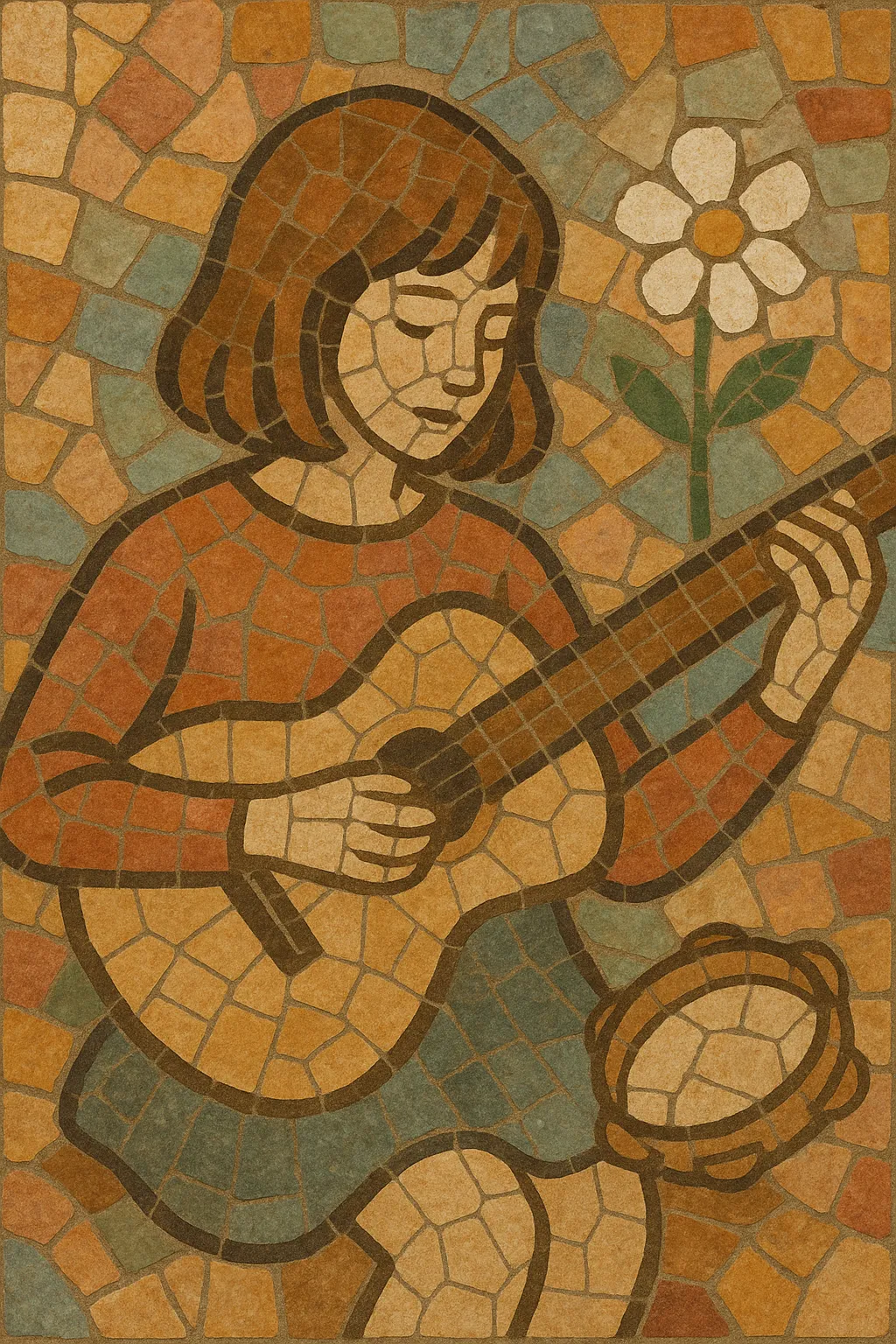Twee pop is a sweet, minimalist branch of indie pop defined by jangly guitars, soft vocals, and an unabashedly tender, naive outlook. Songs tend to be short, melodically straightforward, and recorded with a low-key, DIY sensibility.
Its sound often features lightly strummed or arpeggiated clean guitars, handclaps, tambourine, and occasional glockenspiel or melodica. Lyrics favor everyday romance, shyness, friendship, and small personal details, delivered with boy–girl harmonies or gentle, breathy leads.
Aesthetically, twee pop positions itself against macho posturing and excessive polish, embracing vulnerability, intimacy, and charm. The result is music that feels intimate, playful, and sincerely sentimental.
Twee pop emerged within the United Kingdom’s indie underground as a particularly gentle, melodic strain of indie pop. Early seeds were sown by the DIY post-punk ethos, the jangly guitar sound associated with Scottish and English independents, and a revival of 1960s girl-group and sunshine-pop sensibilities. The term “twee” (initially pejorative) was reclaimed to describe an intentionally innocent, charming aesthetic.
The NME’s 1986 C86 cassette helped crystallize the sound and values around jangly guitars, melodic naivety, and DIY production. Key UK labels—such as Sarah Records, 53rd & 3rd, and The Subway Organization—provided a welcoming home for bands that prized intimacy over aggression and subtle hooks over virtuosity.
In parallel, US scenes (notably around K Records and Slumberland) echoed the UK’s soft-focus approach, with Beat Happening and other groups emphasizing lo-fi textures and unguarded lyricism. In the UK, acts like Talulah Gosh, Heavenly, The Field Mice, and later Belle and Sebastian broadened the palette with richer arrangements while retaining tenderness and melody.
The 2000s saw online communities, boutique labels, and festivals (e.g., Indietracks) fuel renewed interest. Bands across Europe, North America, and Asia adopted the style’s jangly guitars, pastel-toned aesthetics, and diaristic lyrics. Twee’s DNA filtered into chamber-pop arrangements, bedroom-pop production, and broader indie-pop songwriting, sustaining a cycle of revival and re-interpretation.
Use clean, jangly electric or acoustic guitars, electric bass, and a simple drum kit with light touch on snare and tambourine. Add handclaps, glockenspiel, melodica, or recorder for sparkle and innocence.
Favor diatonic, major-key progressions (I–IV–V, I–vi–IV–V, or I–V–vi–IV). Keep voicings open and uncluttered. Melodies should be singable and memorable, with modest vocal ranges and frequent call-and-response or boy–girl harmonies.
Choose mid-tempos to sprightly feels (roughly 90–140 BPM). Use straightforward 4/4 with occasional bouncy, two-step grooves. Keep drum patterns uncluttered—tight hi-hats, gentle snare, and tasteful fills.
Write about everyday tenderness: crushes, awkward conversations, friendship, letters, bicycles, and small rituals. Embrace sincerity, vulnerability, and specific details. Avoid cynicism; let charm and plainspoken imagery carry the emotion.
Record with a light, DIY aesthetic: minimal distortion, gentle compression, and subtle reverb. Double-tracking vocals softly and panning guitars for width can preserve intimacy. Keep songs concise (2–3 minutes) and arrangements lean so melodies shine.
Use simple forms (verse–chorus–verse) with brief bridges. Prioritize hooks early. Layer tambourine or handclaps in choruses for lift. Resist over-arranging—clarity, warmth, and a human-scale mix are core to the feel.


